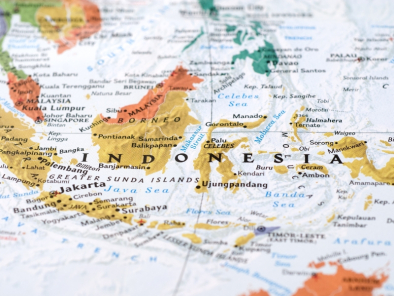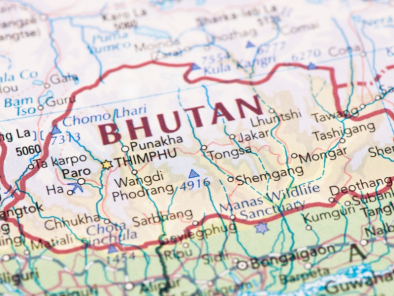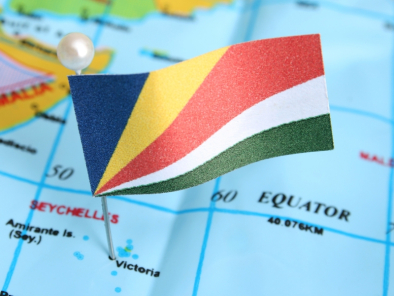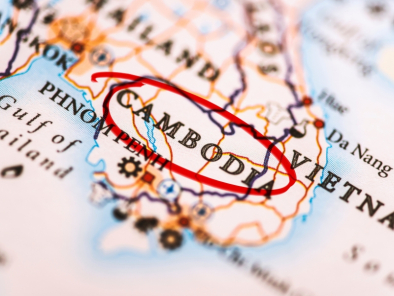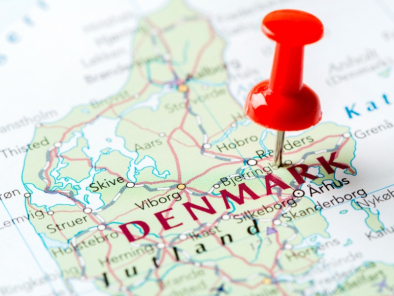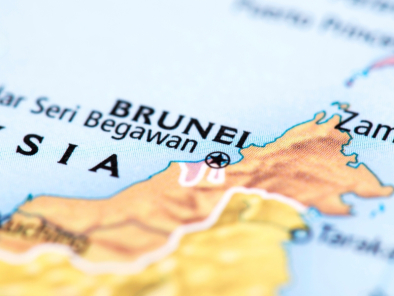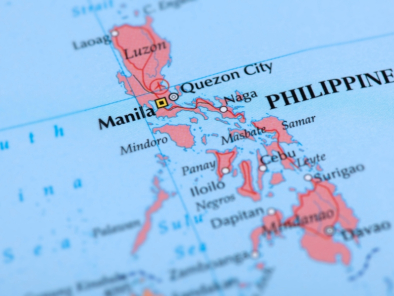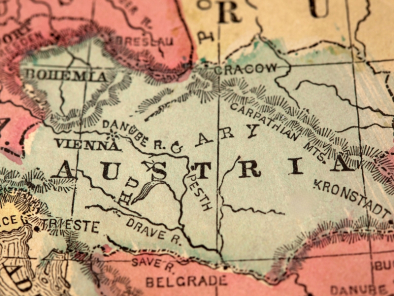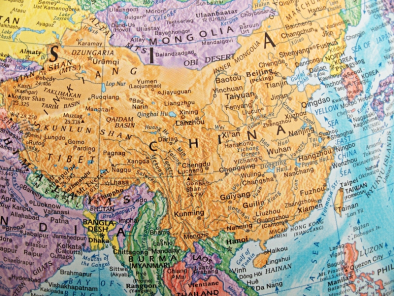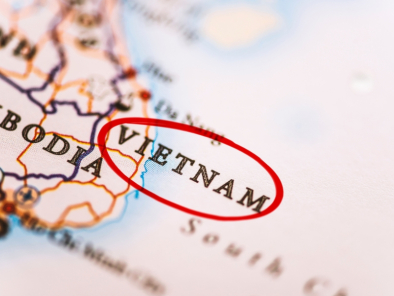
Posted by: Leo Travel Hub
For years, the name
The towns and cities of
Location
Located in the centre of South east Asia,
Visas: The visa is
to be obtained prior to arrival in the country
Climate
In South, the
climate undergoes less variation with an annual average temperature of about
27Degree Celsius in
CURRENCY:
Currency: New Dông (VND)
Notes: VND100000, 50000, 20000, 10000, 5000, 2000, 1000, 500, 200 and
100
Coins: Coins are not used
Credit cards: An increasing number of outlets accept Visa and
MasterCard. Check with your credit or debit Card Company for details.
US dollars must be new without
markings or tears) is used widely. The Euro is also used in
Travelers cheques can be exchanged into
Vietnamese dong in the banks. Banks are generally open Mon-Fri 08h00-11:30 am and 1:00
to 5:30 pm and Sat 08h00-12h00. Credit cards are becoming popular. ATM is installed
in many tourist and economic centers in big cities.
Getting There
Air: The good news is that Vietnam
Airlines has a reasonably extensive network of domestic flights, linking
all major towns in the country. This cuts down travel time considerably, for
example
There are Domestic Airports in Vietnam Are:
Gia lam in
Aiport Taxes: International
flights Adult need to pay some amt appro 14 Usd, free for children under 2yrs.
CLOTHING:
Shorts and sleeveless tops are ok for the beach, but definitely not for a temple visit. In fact the Vietnamese are quite conservative where dress is concerned, and any public exposure of large areas of skin is frowned upon. Shoes also need to be removed before entering many temples - check first.
ELECTRICITY:
The voltage used is
220 volts.
DAILING CODE:
International dialing code: 84 Area codes:
City dialing codes are preceded by 0 when dialing within the
country. Most post offices offer the facility to make international phone
calls. Often you give the operator a deposit and they then dial the number for you
and direct you to a booth though direct dialing is becoming more common, for
which you can purchase a UniphoneKad telephone
card.
CUISINE
Vietnamese cuisine is some of the most enticing in the
world, blending South East Asian spices with Chinese style stir-fries and
French gastronomy.
There are numerous delicacies in
MEDICAL
The tap water is not safe to drink in
Be careful in the sun - always use a high-factor sun cream,
wear a hat to avoid heat stroke and drink plenty of water to prevent
dehydration. Too much sun is often the prime cause for sickness or diarrhoea in
this climate.
There are hospitals in major towns and cities and health care centers
in all areas but facilities are limited.
Health insurance is essential and should include cover for
emergency repatriation by air.
PERSONAL SAFETY
Though
Be particularly careful not to leave bags or valuables unattended
or to carry them where they can easily be snatched by passing motorcyclists.
This is a particular risk when riding in a pedicab, as your belongings are
exposed. Pedicab drivers themselves have been known to try to extort money from
passengers, so to be on the safe side it's
best to only take pedicabs directly associated with your hotel.
Thieves sometimes congregate around international hotels, so be on your guard when entering or leaving your accommodation. Keep your passport and other valuables in your hotel safe where possible and carry a photocopy of your passport with you.
Emergency Numbers:
Police:
113
Ambulance:
Tel: 115
Fire: Tel: 114
TIPS:
Tipping is not customary in
LANGUAGE:
Vietnamese is the official language and though French is spoken among older inhabitants as a second language, English is increasingly widely spoken. Chinese, Khmer and Mon-Khmer/Malayo-Polynesian mountain languages are also spoken by pockets of the population.
SHOPPING and MUST BUYS:
The fact that most goods are cheap in
If a seller sees you are really interested in a product, the price
will often fall dramatically from the first asking price, but try to avoid the
kind of penny-pinching antics that give foreigners a reputation for being
stingy.
All the major cities stock a variety of typical souvenirs, along
with a selection of goods produced by ethnic minorities. If you are heading
into the hills, however, you will find better prices for the shoulder bags,
jackets and purses fashioned by the local ethnic inhabitants.
Local handicrafts are very popular, such as
woven bamboo trays that are painted in bright colours. For something a bit more
lavish, check out the lacquerware, which in many cases is inlaid with
mother-of-pearl. A figure fashioned of bronze, brass or jade might catch your
eye, or perhaps a functioning water puppet painted in glossy colours.
Unusual local instruments make another distinctive choice. Few
visitors leave without one of the ubiquitous conical hats, which cost a
pittance, and many put them to immediate use to protect themselves from the
sun's fierce rays.
The national dress for women, the ao dai, is a
practical yet beautiful item of clothing. It consists of baggy trousers and a
knee-length dress with a long slit. Normally made of silk the ao Dai cover
the entire body but still shows off the figure. Although you might not wear it
back home, it makes a lovely souvenir.
Silk in general is readily available and many tailors, especially in
One of the most personal of all souvenirs, however, is a painting,
either in oil or watercolour, by a local artist. Galleries in
Counterfeit merchandise is readily available. The
latest CDs and novels can be bought for a few dollars, while brand name
clothing rip-offs are similarly cheap. While you might safely bring these items
back home with you when you return form
Shops are generally open Mon-Sun 07h30-12h00 and 13h00-16h30.
CITIES:
HO
International departure tax is payable at the airport and is currently USD10. You can pay in American dollars or the equivalent in Dong. There is a domestic departure tax on internal flights. The amount is set in US Dollars but is only payable in Dong. Recently the tax amounted to VND23000, or USD1.50. The amount in Dong is subject to change due to devaluation.
Getting Around
By Train:
The country's 2,500 km of railtracks make travelling by train an interesting
option.
The main route is up the coast from
Three routes fan out from
You need to book a ticket several days in advance since the
service is very popular, and while travelling, be on the lookout for
pickpockets and hustlers in general.
Many travelers opt for domestic flights in order to save time, but
the truth is that train travel can lead to encounters with friendly people that
will linger in the memory for years.
By Bus: Traveling
on regular buses in
The cheapest - and
in many ways - best option of all is renting a bicycle and joining the
millions of cyclists causing mayhem at each crossroads.
The following
tables provide approximate driving distances from
By Boat: There are
ferries and boats of all descriptions along Vietnam's straggling coastline, and
you are likely to use one to visit the islands off Nha Trang, cruise around the
Mekong Delta or glide around the towering peaks of Halong Bay. In some parts of
the country, the local people row their simple craft while standing, while in
others they sit back and row with their feet.
Attractions
HANOI
Hoan Kiem is an urban district of
Van Mieu:
The
Located in the
centre of Ha Noi, Van Mieu, or the
According
to historical records, during the 8th lunar month of the Canh Tuat
Year (1070), King Ly Thanh Tong raised several important monuments, including
the
In 1076,
Tran Quoc Pagoda
Located beside the
dazzling
In the time of
King Le Kinh Tong (1600-1618), the pagoda was removed to the Kim Ngu (Golden
Fish) Islet due to the river bank crumbling and was renamed Tran Quoc (National
Defence).
One-Pillar Pagoda
is famous for its ancient architecture. It was originally called Dien Huu
(Longevity) Pagoda. For many Vietnamese people, the image of the pagoda is the
symbol of
History says that
the One-Pillar Dien Huu Pagoda was characterized as the symbol of Buddha. The
Pagoda was built in 1049 by King Ly Thai Tong, who ruled from 1028 to 1054.
According to the annals, one day, King Ly Thai Tong dreamed that he had met Quan
The Am Bo Tat (Goddess of Mercy) taking him to a lotus flower. The King told
his men the dream and he was told that it was the symbol of Longevity. The King
immediately ordered the construction of the Pagoda in the shape of the lotus
flower to worship Avalokitevara.
The pagoda was
built in the Forbidden Citadel with a special architecture, all from wood. It
was raised designedly on a single stone pillar to resemble a lotus blossom. It
can stand firmly on top of the pillar because it is supported by a system of
wooden rafters joined by tenons and mortises. The small pagoda in cubic-shaped
covered with a curved roof. Each side is nine feet long with a curved roof
placed on a round stone pillar. From the edge, there is a narrow brick path
running through the pond to a nice ladder leading up into the Buddhist tower
where there is a notice reading that the Lotus tower and pagoda were built in
memory of a dream had by King Ly.
Every morning, the surrounding park
fills with locals who arrive to exercise and play badminton. By the way, there
still are a few tortoises who call this area home.
Hoan Kiem was already considered the most beautiful lake in
Ngoc
Ha
Ngoc Ha Temple was
named after an old village, Ngoc Ha camp, one of 13 camps in the West of Thang
Long (the old capital of
The date written on the temple shows
that it was restored in the 10th Thanh Thai Year (1899). By investigating
relics and records kept in the temple, it is estimated that the temple was
built at the end of Le Dynasty and be repaired many times in Nguyen Dynasty.
Today, we still can see its general architectural structure with ancient
features such as gables, roof edges which were in the form of flying dragons
and clouds. Many items of altar decoration of great artistic value are kept
carefully in the temple. Besides being an architectural heritage, Ngoc Ha
temple is also a historical site of anti-French activities in the late 19th
century, even the August 1945 revolution and resistance war against the French
from 1946 to 1954. Opening hours: morning to evening
In the ancient times, this place used
to be a famous resort reserved for kings and mandarins. Many beautiful palaces
and monuments were built on the bank of the lake; among them are
Tay
Ho
This pagoda is beautifully positioned on a peninsula
projecting into
Situated on an island in the West Lake
is the Tran Quoc pagoda, the oldest pagoda of
Kim
Lien Pagoda
Kim
Lien Pagoda was originally built on Nghi Tam peninsula, on
the bank of
Kim Lien is composed of three pavilions, each of which has 2 roof layers and
the appearance of being slightly curved and supple. Apart from its nice
disposition, the pagoda has a gate of sophisticated and intricate architecture.
Location: Today it is located in Quang An village, Tay Ho district,
Peach
gardens of Nhat Tan and Flower village
Peach blossoms are an enduring symbol of the Lunar New Year. Nguyen
My Ha visits Nhat Tan where the delicate art of growing the trees is passed
from generation to generation.
On the dirt road leading toward the
The flowers in Ha Noi’s
traditional flower villages in the northern rim of
Don't miss the, which traces the country's military history from
the 1930s to the present day. The exhibits are superb, ranging from captured
tanks and aircraft to haunting photographs, espionage gear and guerrilla
weaponry. As you might expect, the story of the war is told from the Vietnamese
perspective, which can prove quite challenging for some visitors. For more on
the War visit the Maison Centrale, otherwise known as the "Hanoi
Hilton" where American POWs were held and interrogated.
The concentration of karst limestone outcrops jutting out of the
turquoise waters of
The best way to appreciate the splendour is to stay in
Cat
Ba
The
This is the most
beautiful grotto full of stalactites and stalagmites. Tourists can have a good
view of the calm bay surrounded by islets and abrupt coral reefs. The sparkling
lights in the cave from the candle make it more magnificent.
The Dau Go Cave
This cave is great
thanks to thousands of stalactites and stalagmites. It is naturally divided
into 3 huge parts that can room 3,000 people at the same time. In the 13th
century, one Tran dynasty general used to hide many wooden stakes used to wreck
the Northern invaders’ warships.
The Trinh Nu Cave
There are many stalactites and stalagmites of queer shapes or young girls’ faces. A story was that a local mandarin kidnapped a nice girl of a poor fishing family as his concubine. She tried to escape but could not go home because her return might endanger her parents’ life. She decided to stay on this islet and committed suicide. Since then the cave was named the “Virgin Girl” cave.
The stereotypical image of
Following its journey through the country, all the way through the country from
Despite being a photographer's paradise, the region is not overrun with
tourists, enabling you to soak up the atmosphere in its full glory. Take a day
trip from
Ca
Mau
U Minh forest
A large percentage
of Ca Mau province's area is covered by forest; 150,000 ha being alluvial
soils, typical of the tropical monsoon climate. Being flooded every day by
tidal waters, the salt bearing trees grow in this environment with animals and
micro organisms. The biological productivity of this land is highest among
Ngoc Hien Bird Sanctuary
Ngoc Hien is a
final district of Ca Mau and is also the terminal area of
The Hon Khoai
group of islands is 14.6 km from the main land, just southwest of the town of
The garden is in quarter No. 1, Ca Mau town and is the most attractive tourist spot in Ca Mau. The 18,2 hectare-large garden has a weekend entertainment area for the people of Ca Mau. There is a two-hectare-large natural bird sanctuary here that attracts many rare birds. Nowadays the 19th May garden is being invested in order to expand its area up to 6 hectares.
Cu Chi Tunnels
The
ability of the Viet Cong to make themselves invisible was the most significant
factor in the outcome of the "American War", and this was achieved by
an intricate network of tunnels that allowed them to move
where they wanted underground.
Many of these tunnels were originally only 80cm wide and high, but those at Cu
Chi have been enlarged, ironically to accommodate larger Western girths. Visitors
can climb into the tunnels and get an impression of what life was like for the
people living here. Although claustrophobic, the sophisticated tunnel network
incorporates dining areas, sleeping quarters and various booby traps to catch
unsuspecting invading soldiers.
A few minutes in these cramped, dark spaces is enough for most people, which
makes it all the more amazing that the Viet Cong spent weeks or months at a
time below ground. Inadvertently the experience is rendered more authentic by
the audible presence of a local shooting range. Located about 30km from Ho Chi Minh, the tourist tunnels are easily reached in a day
trip from the city
Nha Trang
With over 3,000km of tropical coastline,
The palm-fringed beaches provide an ideal place to go swimming, get a massage
or simply relax in the sun, with picturesque and relatively undiscovered
offshore islands accessible by boat trips nearby. This is also one of the
cheapest places in
Tourism has hit Nha Trang in a fairly major way in recent years, so don't
expect to find a haven of peace and quiet. Hawkers and other tourists fight for
space on the beach in high season, making it a lively - rather than
relaxed - getaway. The nearby ancient Cham ruins of the Po Nagar towers
can be a place to get away from at least some of the hordes, and soak up some
culture with your sun.
Beware of the unpleasant side effect of the increasing popularity of Nha Trang:
security has become a concern on the beaches.
Nha Trang is the stunning capital of
Khanh Hoa province. It is one of the nicest cities in southern
Nha Trang is a large city, with a
population over 200,000 and is predominantly flat, so the best way to get
around is by bicycle. You can get a massage on the beach for about 3 US$ an
hour. The beaches lining
Po
The
The entrance to the site is at street
level followed by a staircase op the hill to the towers. On you way up, on the
right, you will notice the remains of the meditation hall, which was the
original entrance for Cham worshippers. The other smaller towers are only
meters away from this and all of them are militaristically facing due east.
Make sure you take off your shoes before entering any of the temples here. The
Hon Chong Promontory
the promontory just out into the South
China Sea and offers a view of the bay and coast north of Nha Trang and nearby
islands. There are a number of shops selling the same things including
souvenirs, and some cafes with deck chairs set out to admire the view.
Giant Sitting Buddha and the Long Son Pagoda
This enormous 9 m high Buddha was
built quite recently in honor of those monks who elected self immolation rather
than continue to live under the oppressive Diem regime. The white Buddha sits
upon a hill close to the train station and is worthwhile going up for the view
of Nha Trang and the coast. The large Buddha’s base used to be a library until
it was closed after the Tet Offensive when it was discovered that the Viet Cong
used the library to plan attacks on the city. The pagoda is at the base of the
stairs that lead up to the giant Buddha and is very ornate with a strong
Chinese influence
Dalat
Once known as the Paris of the East, Dalat is a hill town
situated between Nha Trang and
The town is frequently described as the most 'un-Vietnamese' town in
In the vicinity of Dalat are several outstanding waterfalls and the
surrounding scenery is idyllic. Chief among Dalat's many highlights is the Crazy
House, known more formally as the Hang Nga Guesthouse. This utterly unique
and extravagant avant garde building is the work of a local artist who
describes it as a "labour of love in process". Each of the
guesthouse's rooms are decorated according to a different theme, each a triumph
of kitsch and testament to a creative genius.
The
Hoi An
The delightful river
Hoi An is additionally a tailoring centre of some renown. The main
streets are lined with family run tailors, and prices are ridiculously cheap.
Tailors copy designs from magazines, and can knock up a made-to-measure suit
for you in 24 hours.
Once you've exhausted sightseeing and shopping opportunities, rent a bicycle
and take a trip to the local beach. The ride there and back is
exceptionally pleasant, as the road winds through rice paddies and past old
churches being reclaimed by the jungle foliage.
Though much of this former capital of
Wander round the enormous 19th-century citadel surrounded
by a moat and fortified gates, or explore the remains of the mysterious
An essential part of any trip to the city is to take a boat ride
along the
The
Citadel
The Citadel
consists of three cinctures, the moated Citadel (Kinh Thanh), the Imperial
Enclosure (Hoang Thanh) and the
The places of
interest inside the Citadel are the flag tower, Ngo Mon Gate (The Noontime
Gate), the Courtyard for royal ceremonies, the palace of supreme peace, halls
of the mandarins, the memorial temple for Nguyen Kings, nine holy cannons, nine
dynastic urns and the
King
MinhMang’s Tomb
The construction
was planed during the king’s lifetime and built between 1841 and 1843 by his
successor. The palace, the pavilion, the entrances are harmoniously built
around two big lakes that make these more luxurious and peaceful.
The three gates
lead into the Honour Courtyard of the Tomb, Dai Hong Mon (Great Red Gate), Ta
Hong Mon (Left Red Gate), Huu Hong Mon (Right Red Gate). From the Courtyard
there are three granite staircases which are reached via the square Stele
Pavilion, Dinh Vuong. The solemn emperor’s burial place is situated on a mound
of earth covered with mature pine trees, behind Sung An Temple, some terraces
and stone bridges.
King TuDuc’s Tomb
The King had
designed himself this exquisite tomb and constructed it when he was still on
the throne in 1848. The tomb was based on two axes, one for the mausoleum, and
the other for the palace, 7 km far from the city, surrounded by a solid
octagonal brick wall. It comprises an important number of buildings, temples,
man-made ponds full of nenuphars and lotuses, crossed by various bridges and
covered by frangipanis. This is one of the most romantic and splendid
masterpieces. The king used this as the palace for working and relaxation when
he was alive.
TuDuc’s sepulchre
enclosed by wall is on a side of the Half Moon Lake. In fact, Tu Duc was never
actually interred here. The place where he was buried has not been known yet.
In order to keep the location secret, 200 servants who buried the King was all
beheaded.
King KhaiDinh’s Tomb
The ornate tomb of
Khai Dinh, who ruled the country from 1916 to 1925, is perhaps a symptom of the
decline of Vietnamese culture during the colonial period. Khai Dinh - the
twelfth king of the Nguyen dynasty - is the father of King Bao Dai, the last
emperor of
The tomb's
construction started in 1920 and completed in 1931. It is unlike
The Thien Mu Pagoda
This Buddhist
monastery was erected in 1601 by Lord Nguyen Hoang, the ancestor of the Nguyen
dynasty. It was renovated in 1844 under King ThieuTri’s sovereignty. Legends
said that one night people found an old lady sitting on this small hill,
wearing a red long dress and green trousers and she claimed that this place
belonged to the supernatural power, so a pagoda should be constructed here.
After saying that, the lady disappeared in the cloud. Since then it was called
the pagoda of the old celestial goddess.
Ho Chi Minh Mausoleum
Though it may sound a bit morbid to pay a visit to a tomb, the
experience is essential to help understand the importance of "Uncle
Ho" in building the nation. The mausoleum in
Crowds of solemn Vietnamese walk slowly past the glass coffin
where the wispy beard and shiny forehead of the country's liberator are
frozen in time. The older visitors often include former Viet Cong guerillas that
fought under the leadership of Ho Chi Minh against the French colonial army
when independence was declared in 1945.
To avoid disappointment take careful note of the somewhat erratic opening
hours, and last entry times. Also, you must dress appropriately and
demonstrate respect while visiting. The nearby Ho Chi Minh Museum and the
leader's former house provide further insights into the life and times of
Sapa
A trip from
A French colonial hill station in the 1920s, Sapa is home to numerous minority
groups such as the Red Zao, Black Hmong and Lantien Yao people. These peoples'
colourful traditional costumes lend a vibrant air to the town, particularly
during the weekend market. In the environs, enticing trails lead off to
neighbouring villages or - for the more serious climbers - up Mt Fansipan.
A trip here still represents something of an adventure, although scheduled
tours are becoming more common. Due to its altitude, the region offers a
welcome respite from the humidity of the rest of the country, but don't get
caught out - it can get too cold for comfort as well.
Dotted around the countryside of
These atmospheric temples are impressive relics of the once great Cham
civilization, which flourished in the 14th century, and, through feuds with
neighbours, was largely responsible for the downfall of Angkor Wat in
The best places to see
DA NANG
990 km far from Ho Chi Minh City, Da Nang is the coastal town
lying by a river, surrounded by several mountains, with a busy port and
splendid beaches such as Non Nuoc Beach (known as China Beach), and Tien Sa
Beach. It is here in the 17th and the 19th centuries the
Spanish and the French disembarked to attack the Vietnamese. The American
jumped into
The
The Cham museum is the one which has the largest collection of
Cham sculptures in the country. More than 300 fascinating sculptural statues
and bas-reliefs have been collected from different sites of Cham kingdom like
Tra Kieu, Dong Duong, My Son and preserved in the special museum built by the
French. The ancient objects for display dated from the 4th to 12th
century. It is really a big attraction for every tourist.
The
This
Non
Non Nuoc is near the
After 1975, the
government of Ha Noi renamed Sai Gon to
With a population of over seven million, Sai Gon is the economic center of
The
Historical Museum
Is a huge
collection of historical objects relating to the development of
That is a big
collection of weapons and information on the modern wars in
Notre
Dame Cathedral
The church was
built during 1877 and 1883 by the French, who imported all materials from
France- Notre Dame with Virgin Maria for many Catholic followers, so that their
power in this colonial was shown. The church today is one of the Catholic centers
of the country. Sai Gon Archbishop is working there. Some Vietnamese Catholic
saints are also worshipped there. Two services in the morning and in the
afternoon are convenient for all believers. The most crowded time for the
church is New Year time and Christmas...
Cho Lon or
Considered as one
of the most ancient Chinese temple, the place is consecrated to the Sea goddess
bas on Chinese folk beliefs. The temple is a place for other gods such as Money
God, Mother Goddess, and Mermaid…Queer and ancient worshipping things are
precious and worth seeing. A prayer for good health and business can be said
after an incense coil is purchased. Good luck in doing business can be granted
by the Money God after some money is offered to him.
Giac
Lam Pagoda
Giac Lam pagoda,
the oldest Buddhist pagoda in Sai Gon, was built in 1744 from a fund drive by
Ly Thuy Long, a native of Minh Huong village, who then transferred it to Ch’an
Master Phat Y. Inside this pagoda is a huge collection of old Buddha and
Arhat’s statues. Ancient furnishings and statue arrangements will keep tourists
interested. Things for decoration dated back some hundred years ago. It is an
active temple. Prayers consist of chanting to the accompaniment of drums, bells
and gongs and follow a traditional rite seldom performed these days.
Because the last
reconstruction was in 1900, the architecture, layout and ornamentation have
remained almost unaltered - unlike most other pagodas in this city.

